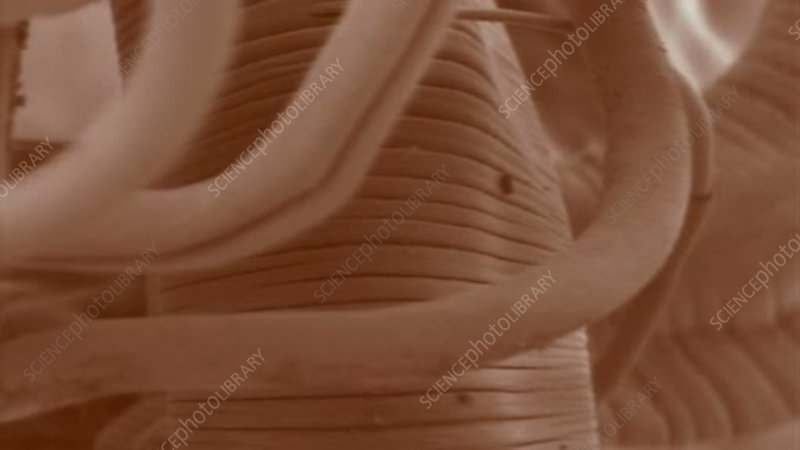
Imagine sitting in a classroom, surrounded by eager students. A whipworm demonstration can be a little like a magic show where the audience is not just entertained but also educated. This is because whipworms, which are thin, whip-like parasites found in the intestines of various animals (including humans), bring a unique twist to lessons about life cycles, ecosystems, and the importance of maintaining a healthy environment. You might be wondering how to approach this topic and make it suitable for the classroom. Let’s dive in!
What are Whipworms?
To start, let’s get acquainted with what whipworms actually are. Whipworms belong to the genus *Trichuris* and are intestinal parasites primarily affecting the gastrointestinal tract of their hosts. They can be found in humans, dogs, and other mammals. Their name comes from their long, thread-like shape, resembling a whip, which helps them anchor themselves to the intestinal walls.
These little creatures have a unique life cycle that can be fascinating to explore. Whipworms lay eggs that are expelled in feces. Once these eggs are in a suitable environment, they develop into larvae, which can then infect a new host. This life cycle presents a great opportunity to talk about how organisms adapt and survive in various environments, making them an excellent choice for science demonstrations.
Understanding whipworms’ role in ecosystems is also crucial. While they’re often seen as harmful, they play a role in their host’s immune responses, which can lead to important discussions about symbiosis and disease. It’s not just about the whipworm itself, but rather what it represents in a broader biological context.
Whipworm Demonstrations: Safety First
Now, before you rush to include whipworms in your next science demo, let’s talk about safety. First and foremost, handling live parasites in a school setting is not advisable. Instead, consider using visual aids such as images, videos, or even models to illustrate their life cycle and biology.
Using images can be a great way to engage students while keeping things safe. For example, you can show pictures of whipworms in different stages of their life cycle. You can even provide materials like diagrams on how these worms interact with their hosts. Visuals can help students grasp concepts better, and they allow for healthy discussions without any risk.
Another alternative is to explore the idea of whipworms through case studies or research papers. Discussing real-world implications, such as how whipworms affect human health in certain parts of the world, can lead to meaningful conversations about public health and hygiene practices.
Engaging Activities to Explore Whipworms
Now that we’ve covered the basics, let’s brainstorm some engaging activities that explore whipworms without directly using them. One idea is to create a life cycle chart.
1. Life Cycle Chart Activity:
– Materials: Colored paper, markers, and glue.
– Instructions: Students can create a visual representation of the whipworm life cycle, incorporating each stage from egg to adult worm. This not only reinforces their understanding but also allows them to use their creativity.
2. Debate on Parasites:
– Host a classroom debate focusing on the impacts of parasites like whipworms. Divide students into groups and assign them viewpoints about whether these organisms are more harmful or beneficial. This encourages critical thinking and research skills.
3. Research Presentations:
– Have students select different parasites, including whipworms, and present their findings to the class. This can include their biology, effects on hosts, and real-world implications for humans and animals.
These activities not only keep the learning process interactive but also ensure that whipworms remain a safe topic for exploration while tapping into rich biological concepts.
Studying Whipworms in Context: Health Implications
Whipworms are more than just a science curiosity; they have significant health implications as well. In humans, whipworm infection can lead to a condition known as trichuriasis, which can cause symptoms like abdominal pain and diarrhea. By discussing these health issues, you can connect the science of whipworms to real-life consequences.
It’s also a great way to talk about sanitation and hygiene. Whipworms thrive in areas with poor sanitation conditions, so discussing where these infections occur can lead to discussions about global health, public policy, and improving community health standards. Engaging students in these topics can create a sense of awareness and responsibility towards global health challenges.
Connecting Whipworms to Broader Biological Concepts
One of the coolest aspects of studying whipworms is their connection to broader biological concepts like evolution, ecology, and host-parasite interactions. Whipworms and their hosts showcase how organisms adapt over time to survive and thrive.
You might want to include discussions about how some parasites have evolved mechanisms to evade the host’s immune response. It opens up avenues to talk about evolutionary biology and how species interact within ecosystems. Understanding these dynamics can enhance students’ grasp of ecological balance and interdependence among organisms.
Another interesting angle is to compare whipworms to other types of parasites. For instance, how do they differ from tapeworms or roundworms? This comparison can deepen students’ understanding of the diversity of life and the survival strategies organisms use.
Potential Challenges and Solutions
Every science demonstration comes with its challenges, and discussing whipworms is no exception. One common concern is the discomfort some students might feel discussing parasites.
To address this, you can foster open discussions and encourage questions. Make it clear that parasites are a natural part of many ecosystems. A simple way to ease discomfort is to frame the conversation around overall health and the importance of understanding these organisms from a scientific perspective.
Another challenge is ensuring the information shared is accurate and age-appropriate. Always provide context and avoid sensationalism. You want students to learn while feeling comfortable with the subject matter.
Using whipworm in school science demonstrations can be a unique and enriching experience. From exploring life cycles and ecological roles to discussing health implications, whipworms provide a gateway into broader biological discussions. By incorporating engaging activities, visual aids, and meaningful conversations about sanitation and health, you can create a memorable learning environment.
So, if you’re looking to spice up your science curriculum, consider the whipworm! With a little creativity and sensitivity, you can turn this topic into a fascinating exploration that keeps students engaged and informed. Who knew a little parasite could lead to such big learning opportunities?

